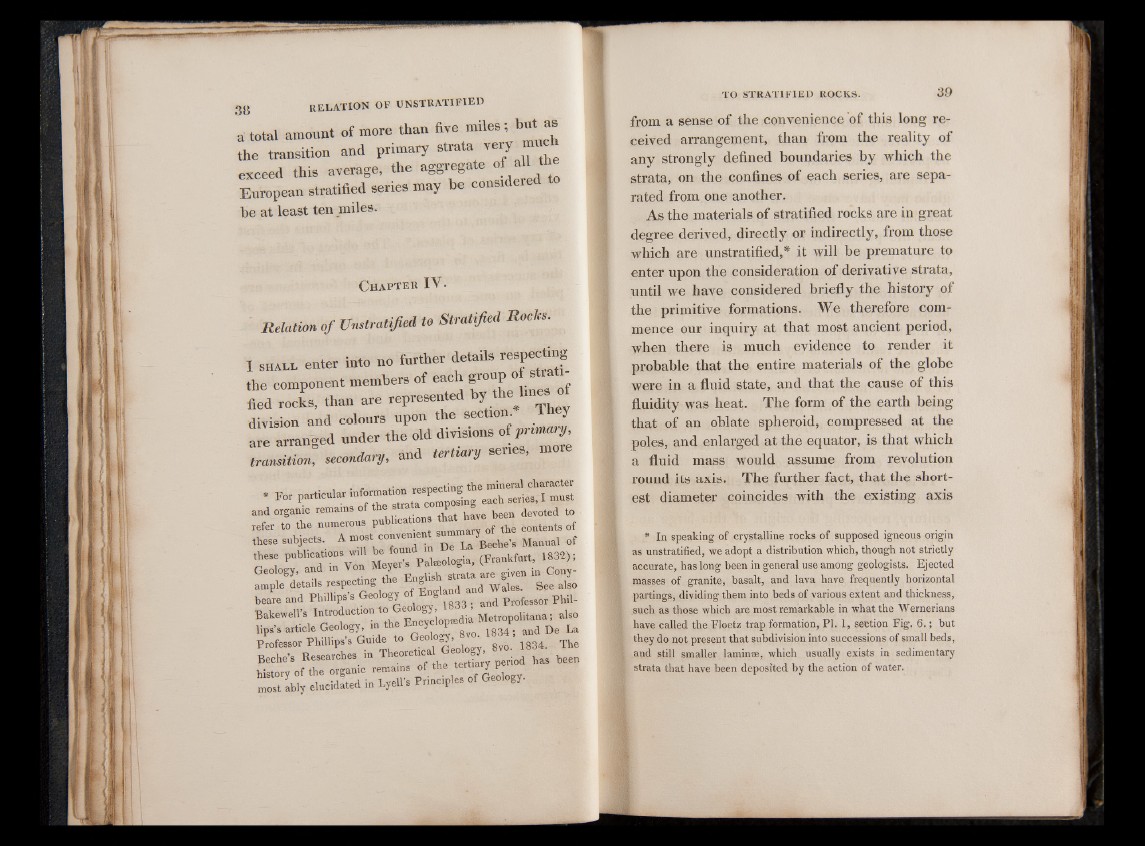
3B relation of unstratified
a total amount of more than five miles; but as
the transition and primary strata « n r
exceed this average, the aggregate of'
European stratified series may be considered
Chapter IV.
Relation of Unstratified to Stratified Bocks.
X shall enter into no further details rejecting
the component members of each gi°“P f
fled rocis, than are represented ^ ^ h n e s of
division and colours upon the section. J
are arranged under the old divisions j j M *
transition, secondary, and tertiary senes, mo
these subjects. A most convenie Manual of
these ^ “ V aW o g la , (Fmnhfutt, W
Geology, a English strata are given in Cony
ample details respecting | , d and Wales. See also
beare and Phillips s Geology of E D Professor Phil-
Bakewell’s
lips’s article Geology, m CL Q^ 8v0. 1834; and De La
Professor Phillips s Guide , 8vo. 1834. The
Beche’s Researches in Theoretica ’ period has been
history of the organic remains ^ th e t e rm r y p
most ably elucidated in Lyell’s Principles of Geology.
from a sense of the convenience of this long received
arrangement, than from the reality of
any strongly defined boundaries by which the
strata, on the confines of each series, are separated
from one another.
As the materials of stratified rocks are in great
degree derived, directly or indirectly, from those
which are unstratified,* it will be premature to
enter upon the consideration of derivative strata,
until we have considered briefly the history of
the primitive formations. We therefore commence
our inquiry at that most ancient period,
when there is much evidence to render it
probable that the entire materials of the globe
were in a fluid state, and that the cause of this
fluidity was heat. The form of the earth being
that of an oblate spheroid, compressed at the
poles, and enlarged at the equator, is that which
a fluid mass would assume from revolution
round its axis. The further fact, that the shortest
diameter coincides with the existing axis
* In speaking of crystalline rocks of supposed igneous origin
as unstratified, we adopt a distribution which, though not strictly
accurate, has long been in general use among geologists. Ejected
masses of granite, basalt, and lava have frequently horizontal
partings, dividing them into beds of various extent and thickness,
such as those which are most remarkable in what the Wernerians
have called the Ploetz trap formation, PI. 1, section Fig. 6.; but
they do not present that subdivision into successions of small beds,
and still smaller laminae, which usually exists in sedimentary
strata that have been deposited by the action of water.